Spices Fact
Spices Fact
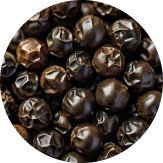
Black Pepper
- Origin: India, specifically the Malabar Coast.
- History: Black pepper has been used in Indian cooking since at least 2000 BCE. It was a highly prized commodity in ancient Rome and Greece. The spice trade routes, including the Silk Road, facilitated its spread to Europe and beyond. Black pepper was often referred to as “black gold” due to its high value. During the Middle Ages, it became a significant driver of the spice trade, influencing European exploration and colonialism.
- Interesting Fact: Known as the “King of Spices,” black pepper was so valuable in ancient times that it was used as currency and even traded for gold. It was also used to pay dowries and taxes in some cultures.
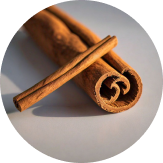
Cinnamon
- Origin: Sri Lanka and Southern India.
- History: Cinnamon was highly valued in ancient Egypt, used in embalming practices and as a flavoring agent. It was imported to Egypt as early as 2000 BCE. The spice was a luxury item in the Roman Empire, often worth more than gold. Cinnamon’s popularity continued through the Middle Ages and into the Renaissance, where it was a significant part of the spice trade controlled by Venetian merchants.
- Interesting Fact: In ancient Egypt, cinnamon was more precious than gold and was used in embalming practices and religious ceremonies. The true source of cinnamon was kept a closely guarded secret by traders for centuries to maintain its high price.
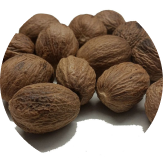
Nutmeg
- Origin: The Banda Islands in Indonesia.
- History: Nutmeg was a prized spice in medieval Europe, valued for its supposed medicinal properties. The Dutch and the British fought wars over control of the Banda Islands, the primary source of nutmeg in the 17th century. The Dutch East India Company maintained a monopoly on the nutmeg trade by controlling these islands and restricting its cultivation.
- Interesting Fact: In the 17th century, the Dutch and the British fought a war over the control of nutmeg-producing islands due to its high value for medicinal properties and culinary uses. The Treaty of Breda in 1667 saw the British trade the island of Run, a nutmeg source, for Manhattan with the Dutch.
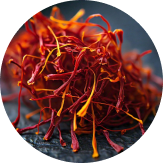
Saffron
- Origin: Greece.
- History: Saffron has been used for over 3,000 years in various cultures for cooking, medicine, and dye. It was highly prized in ancient Greece and Rome. Its cultivation spread to Iran, India, and Spain, making it one of the most sought-after spices. Saffron was used by Cleopatra in her baths for its reputed cosmetic benefits and by Alexander the Great as a healing agent for wounds.
- Interesting Fact: Saffron is the most expensive spice in the world by weight. It takes around 75,000 saffron flowers to produce a single pound of saffron, often referred to as “red gold.” Its high cost is due to the labor-intensive process of hand-picking the delicate stigmas from each flower.
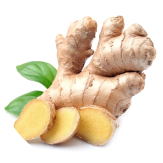
Ginger
- Origin: Southeast Asia, particularly India and China..
- History: Ginger has been used in China and India for over 5,000 years. It was one of the first spices exported from Asia to Europe via the spice trade routes. It was also prized in the Roman Empire for its medicinal properties. Ginger has been used in traditional Asian medicine for its anti-inflammatory and digestive benefits.
- Interesting Fact: Used for thousands of years in Asian medicine, ginger is known for its anti-inflammatory and digestive properties. It was one of the first spices to be exported from Asia to Europe. In medieval Europe, it was a popular spice used in sweets and savory dishes.
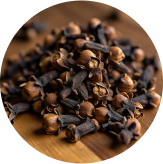
Cloves
- Origin: The Maluku Islands in Indonesia.
- History: Cloves have been used in Indonesia for over 2,000 years. They were highly prized in ancient Rome and China. Cloves became a major commodity in the spice trade, with European powers vying for control of the clove-producing islands. The Portuguese initially controlled the clove trade before the Dutch took over in the 17th century.
- Interesting Fact: Cloves are the dried flower buds of the clove tree. In the Middle Ages, cloves were so valuable that they were worth their weight in gold. They were also used to freshen breath and as a preservative.
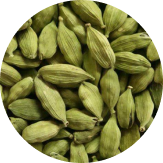
Cardamom
- Origin: India.
- History: Cardamom has been used for over 4,000 years in traditional Indian medicine and cooking. It was a significant export during the spice trade era, valued for its aromatic and medicinal properties. Cardamom is mentioned in ancient Sanskrit texts and was a staple in the Roman spice market.
- Interesting Fact: Known as the “Queen of Spices,” cardamom is one of the oldest known spices, used for over 4,000 years in traditional Indian medicine and cooking. It is often used in both sweet and savory dishes, as well as in beverages like chai and coffee.
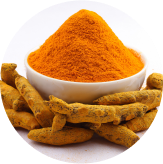
Turmeric
- Origin: India.
- History: Turmeric has been used in India for thousands of years, both as a spice and a medicinal herb. It is a key ingredient in many traditional Indian dishes and has been used in Ayurvedic medicine for its healing properties. Turmeric’s bright yellow color has also made it a popular dye.
- Interesting Fact: Turmeric contains curcumin, a compound with powerful anti-inflammatory and antioxidant properties, making it a staple in both culinary and medicinal practices in India. It is often used in golden milk, a traditional Ayurvedic drink.
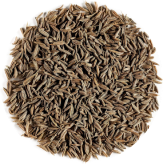
Cumin
- Origin: The Mediterranean and Iran.
- History: Cumin seeds have been used since ancient times, with evidence of their use found in the Old Kingdom Pyramids of Egypt. It was a common spice in Roman cuisine and continues to be widely used in Middle Eastern, Indian, and Mexican cuisines. Cumin was mentioned in the Bible and was used by ancient Greeks and Romans for its flavor and medicinal properties.
- Interesting Fact: Cumin seeds were found in the Old Kingdom Pyramids of Egypt, indicating their long history of use. Cumin is known for its distinct earthy flavor and is a key ingredient in spice blends like garam masala and chili powder.
